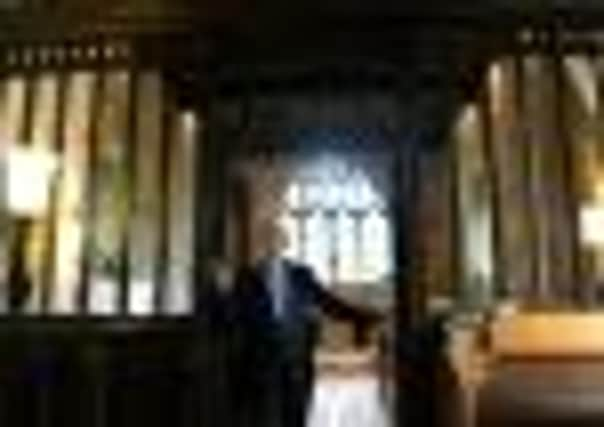Turning up the heat on threat to church heritage


But in recent years, it has become refuge for perhaps the first unwanted guests of its 900-year-old history.
The Grade I listed building, known as the Leper Chapel, has become infested with deathwatch beetles in its oak-timbered roof and woodworm in a 15th century wooden screen which contains a small window through which lepers could watch services – one of the very few examples still in existence today.
Advertisement
Hide AdAdvertisement
Hide AdLast month, the trustees, friends and congregation of the chapel commissioned a firm of Yorkshire architects to devise a plan to flush out the insects, fearing for the speed at which they can eat through buildings.


And what is being proposed, could revolutionise the way historic buildings across the country are safeguarded from decay in future years.
Leeds architect David Sherriff, whose firm Simmonsherriff works with a number of ancient buildings including Selby Abbey and Leeds Parish Church, is looking into using an agricultural technique of safeguarding grain silos on the chapel, by effectively “tenting” the building off and heating it excessively inside to cook the insects.
If the scheme goes ahead, it would be the first time such a practice has been employed in a historic church in Britain.
Advertisement
Hide AdAdvertisement
Hide AdMore likely, the architects are also proposing to install a series of air source heat pumps in the churchyard powered by light sensitive cells on its roof to maintain temperature levels year round and stop the insects being able to breed.


The system, estimated to cost around £30,000, is currently only used in a handful of ancient buildings across the country.
It is hoped the plans for the Leper Chapel, which are being submitted in the next few months, will pave the way for a bright new future of protecting Britain’s history.
Mr Sherriff said: “For decades chemical control has been the way of dealing with this.
“But this doesn’t stop the grubs living in the timber.
Advertisement
Hide AdAdvertisement
Hide Ad“The only way you can stop that is to make the timber dry enough so they cannot eat it any more.”
He added: “In a building of stone and timber, you can do a lot more to preserve it just by controlling the heating.
“These buildings are incredibly expensive to heat and really impossible to insulate properly.
“Putting in a controlled system with carefully controlled sensors can improve efficiency by up to 500 per cent – effectively in the long run it will be saving money.
Advertisement
Hide AdAdvertisement
Hide Ad“This is marking a sea change in the way people are starting to look after historic buildings now.
“It is very simple, but is a case of being quite brave about it.”
The trustees, friends and congregation of the chapel, have welcomed the proposals and are embarking on a series of fundraising events to pull together the cash needed.
The chaplain at the Leper Chapel, John Langdon, said: “What is happening in the chapel now will prove the way forward environmentally and economically for a lot of historic buildings across Yorkshire and beyond.
Advertisement
Hide AdAdvertisement
Hide Ad“It is very exciting and we are very much looking forward to the deathwatch beetles and woodworm being obliterated.
“They will do a lot of damage and unless we get control of them now, it is going to involve a great deal of expense for us in future years. We hope to have the solar panels up on the roof within five years to finance the cost of the ground source heat pumps.”
The Yorkshire Post understands similar plans are also being implemented at the magnificent Victorian Christ the Consoler Church in Newby Hall, near Ripon, later this year.
The hospital of St Mary Magdalen was founded by Archbishop Thurstan of York on the first piece of dry land across the River Ure outside of the city walls.
Advertisement
Hide AdAdvertisement
Hide AdSince the 17th century, the Dean of Ripon has been appointed as the master of both the Leper Chapel and nearby St John’s, in Bondgate, which was founded in 1109 to provide hospitality for poor travellers.
But in the 19th century, the Leper Chapel fell into disrepair when a larger church was built on the opposite side of the road, and for a while it was even used as a pig sty.
A major £20,000 restoration project was launched at the building in 1989, and it was re-dedicated.